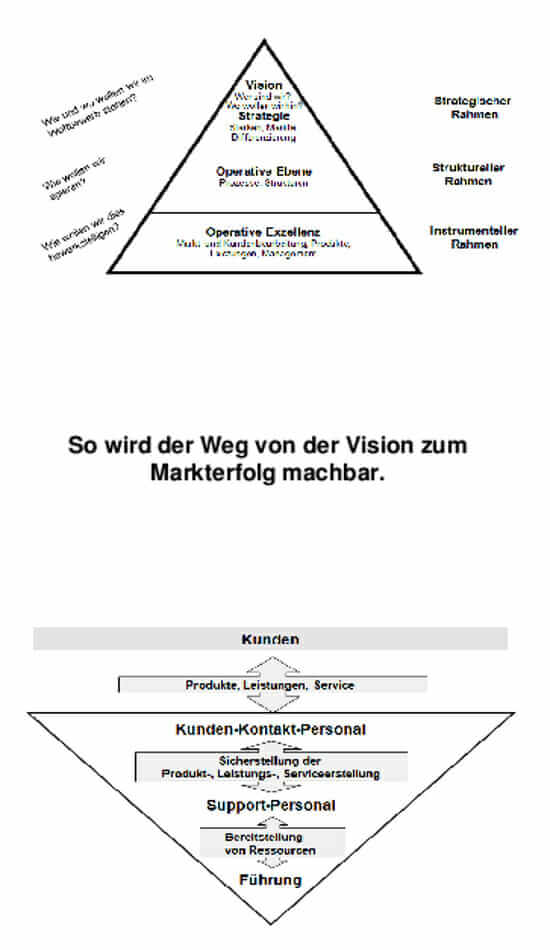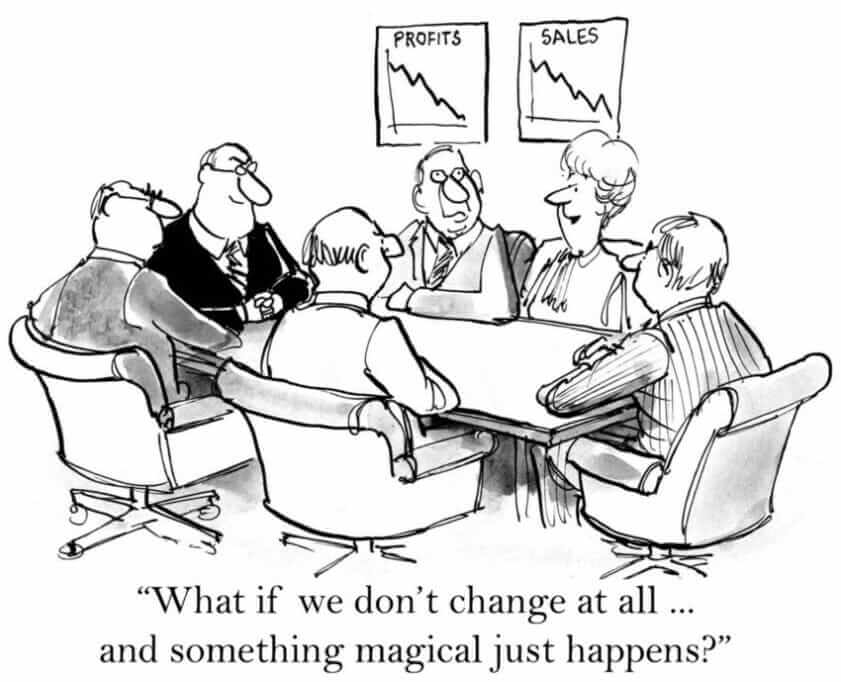Your shopping cart is currently empty!
For their successful, good life Information you really need: Government-funded publisher, awarded the Global Business Award as Publisher of the Year: Books, Magazine, eCourses, data-driven AI-Services. Print and online publications as well as the latest technology go hand in hand - with over 20 years of experience, partners like this Federal Ministry of Education, customers like Samsung, DELL, Telekom or universities. behind it Simone Janson, German Top 10 blogger, referenced in ARD, FAZ, ZEIT, WELT, Wikipedia.
Disclosure & Copyrights: Image material created as part of a free collaboration with Shutterstock. Text originally from: “Reduced to more market success: Simply brilliantly implementing visions and strategies” (2010), published by BusinessVillage Verlag, reprinted with the kind permission of the publisher.
Concept, strategy & goals for success - 7 tips: What do high rollers do better?
By Achim Kelbel (More) • Last updated on October 04.09.2023, XNUMX • First published on 13.09.2018/XNUMX/XNUMX • So far 6376 readers, 2675 social media shares Likes & Reviews (5 / 5) • Read & write comments
Not a few Companys invest a lot of time and Money in their concepts and their strategic direction. But the good ones ideas often fizzle out faster than they are created. Is it just a coincidence or is there another reason? What are the factors for real market success?

Why do so many companies fail?
Why is it that so many companies in the market fail, brilliant visions never come true, brilliant ones Strategies seep away in day-to-day business? Are they always wrong concepts, unpredictable ones customers, or is market success even a coincidence?
Models and advice on how to be an entrepreneur Success has, there are many. After that, there should actually only be successful companies – actually.
Strategic orientation in many companies means: Visions are formulated, suitable concepts are worked out, and the implementation is solemnly announced. However, a look behind the scenes confirms this fast:
Good concepts as toothless papers
Many excellent ideas and promising concepts disappear into drawers or degenerate into toothless paper tigers. The big bracket that holds visions and actions together is missing as well klare, structures. And also on the persistent Implementation it often fails.
Quarterly thinking, frequent management changes and multi-stakeholders Orientation do the rest to thwart the longer-term pursuit of the goal. But there is another way. There are numerous examples of companies that succeed in doing this, and not just in times of general upswing.

What makes successful companies better?
For companies that develop their own business cycle largely independently of economic downturns and upswings, even with the most varied of business models, even when using the most varied of instruments and Methods always find a common denominator:
Crucial here is the systematic and consistent approach: How to do that, you will learn tomorrow in the second part of the article.
7 steps to market success
In many companies, good ideas and concepts are not implemented at all - and of course, the success is also missing. Conversely, successful companies can always find a common denominator: the systematic approach. And these can be summarized in 7 steps:
Step 1: Think ahead
Companies that are successful with their own business cycle do not start any change projects directly with the vision and strategy development. They are the starting point from the strategic level through the structural to the decisive operational excellence.
Companies that operate less successfully start changes with complex workshops on the formulation of guiding principles and mission statements, which are often Objective and lack of understanding among the participants.
Step 2: Creating visions and strategies
When the need for action and the impact on the three levels of strategy, structures and processes, as well as methods and instruments, can be initiated, the vision and strategy must be developed.
Entrepreneurial visions and strategies are not dreams that arise overnight, but hard work to secure the future. It's about a corporate promise. And it has to be done properly, it shouldn't be like that light come off the lips.
Step 3: Determine today's location
Anyone who is already getting into the implementation of visions and strategies is taking action and reaping the rewards of failure. None, certainly not an entrepreneurial one Objective can be achieved if the current location is not precisely determined before implementation.
Positioning is the basis for market success. Only with it can the fields of action be worked out in such a way that resources are spared and above all used purposefully.
Step 4: Aligning structures and processes
Visions and strategies must be in the Organization spiegeln. The "How do we want to implement our vision?" is the key question to align structures and processes.
The most promising concepts and ideas evaporate, the most competitive plans and actions fail when the structures and processes do not fit. They can inhibit, block, prevent, slow down but also ensure, facilitate, promote and accelerate.
Step 5: Focus on the right customers
Not all customers fit the vision and strategy. Customers are important, no question. However, customers also tie up resources and they are only used properly if they are the right customers. Sounds easy, but it is not.
Proper customer focus is therefore more important than overflowing customer databases. The crucial question which customers are the right one, it is based on the strategic goals to answer.
Step 6: Products and services put to the test
The Customer asks again and again: "What's in it for me?". Our products and services have to be put to the test with this question of benefit.
What do customers expect that fit us strategically? How do we meet these expectations today? How can we better align products and services to customer expectations?
Step 7: Get employees on board
No longer a candidate for the Nobel Prize and still a stepchild in everyday business: Die Employees are not sufficiently involved, not adequately informed, fall by the wayside.
The management forgets that they, as perhaps the best captains with the perhaps best navigation instruments and perhaps the best-aligned company ships, will never conquer new worlds without a team.
Here writes for you
 Achim Kelbel is a management consultant, trainer and business coach for medium-sized companies. Kelbel has been working internationally as a consultant, interim manager, trainer and business coach for medium-sized companies for over 14 years. Before that, he held his own management responsibility in the industry for more than 10 years. All texts by Achim Kelbel.
Achim Kelbel is a management consultant, trainer and business coach for medium-sized companies. Kelbel has been working internationally as a consultant, interim manager, trainer and business coach for medium-sized companies for over 14 years. Before that, he held his own management responsibility in the industry for more than 10 years. All texts by Achim Kelbel.
10 responses to "Concept, strategy & goals for success - 7 tips: What do high rollers do better?"
-
Really great site, if you are looking for a good employer!
-
- Exciting contributionHIQIQIDOEk
-
- Exciting contributionhbCNROXWny
-
Concept, strategy and goals for the #Erlog: - Exciting contributionqv1lLY6gea
What do good companies do better? #jobclipr -
Why many fail? Time they just have no time or patience. It could already experienced itself, a concept in another company implemented where one took the time and it runs. one expects today quick shots which cost nothing and a minimal effort. unfortunately it does not work. Re-thinking, cross-thinkers simply make times.
-
Hello Mr. Goldstein,
thanks for the important comment. I think the lateral thinkers just have to do it themselves. I have always struggled to land with my ideas, only when you create success, you will be heard. Unfortunately.
-
-
“Concept, strategy & goals for success - 1/2: What do good companies do better? | PROFESSIONAL PICTURES ” - Exciting contributionJ1SZ7Ap2YS
-
RT @Berufebilder: Concept, strategy & goals for success - 1/2: What do good companies do better? - - Exciting contributionX0s6Dndzen
-
Concept, strategy & goals for success - 1/2: What do good companies do better ?: Not we ... - Exciting contribution0Ff2sIXyKr #Profile #Development
-
How companies implement goals and concepts correctly: Part 1 - What do successful companies ...

![Self-employment & business start-ups: Am I a start-up type? [+ Checklist] Self-employment & business start-ups: Am I a start-up type? [+ Checklist]](https://e68zy2pxt2x.exactdn.com/wp-content/uploads/2018/existenzgruendung-selbstaendig-gruender-idee.jpg?strip=all&lossy=1&ssl=1)






Post a Comment